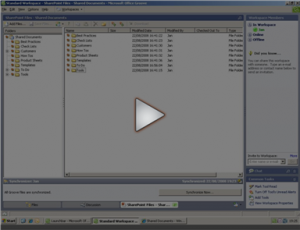I watched this video this afternoon, and there was one specific sentence that drew my attention (around 3:20″): “Customers can run these (web versions of Office) on the SharePoint servers in their enterprise”.
Very interesting! So in the future, we won’t even talk about a tight integration between Office and SharePoint, it might just be the same thing. Client applications that today run on top of SharePoint to keep users away from the browser and on their familiar desktop will be useless. Offline use of SharePoint will be a non-issue, you need to be connected all the time.
Have a look at the video yourself (requires Silverlight).

